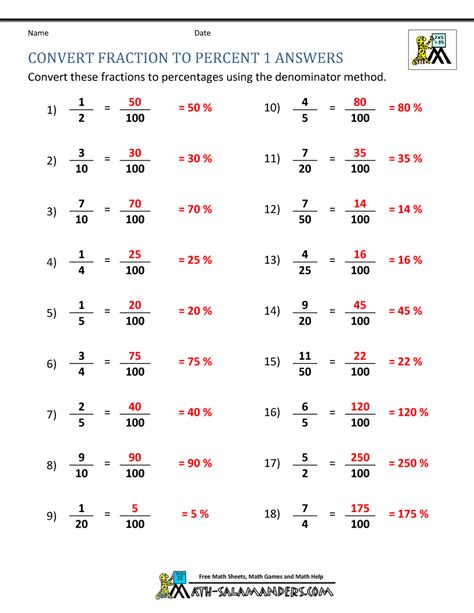What Is 5/20 As A Percent
Kalali
Apr 02, 2025 · 4 min read

Table of Contents
What is 5/20 as a Percent? A Comprehensive Guide to Fraction-to-Percentage Conversion
Converting fractions to percentages is a fundamental skill in mathematics with widespread applications in various fields, from finance and statistics to everyday life. This comprehensive guide will delve into the process of converting the fraction 5/20 into a percentage, providing a step-by-step explanation and exploring various related concepts. We'll also cover different methods for solving similar fraction-to-percentage conversions, equipping you with the knowledge to tackle such problems with confidence.
Understanding Fractions and Percentages
Before diving into the conversion, let's establish a clear understanding of fractions and percentages.
Fractions: A fraction represents a part of a whole. It's expressed as a ratio of two numbers, the numerator (top number) and the denominator (bottom number). In our case, 5/20, 5 is the numerator and 20 is the denominator. This means we have 5 parts out of a total of 20 parts.
Percentages: A percentage represents a fraction of 100. It indicates how many parts out of 100 constitute a certain portion. The symbol "%" denotes a percentage. For example, 50% means 50 parts out of 100, which is equivalent to the fraction 50/100 or 1/2.
Converting 5/20 to a Percentage: Step-by-Step
The core principle of converting a fraction to a percentage involves expressing the fraction as an equivalent fraction with a denominator of 100. Here's how we do it with 5/20:
Step 1: Simplify the Fraction (If Possible)
The first step involves simplifying the fraction if possible. This makes the conversion process easier. We can simplify 5/20 by finding the greatest common divisor (GCD) of the numerator and denominator. The GCD of 5 and 20 is 5. Dividing both the numerator and denominator by 5, we get:
5 ÷ 5 / 20 ÷ 5 = 1/4
Step 2: Convert the Simplified Fraction to a Decimal
To convert the simplified fraction 1/4 to a decimal, we divide the numerator by the denominator:
1 ÷ 4 = 0.25
Step 3: Convert the Decimal to a Percentage
To convert a decimal to a percentage, we multiply the decimal by 100 and add the "%" symbol:
0.25 x 100 = 25%
Therefore, 5/20 is equal to 25%.
Alternative Methods for Conversion
While the above method is straightforward, there are alternative approaches to converting fractions to percentages:
Method 1: Direct Percentage Calculation
We can directly calculate the percentage by multiplying the fraction by 100%:
(5/20) x 100% = 25%
This method bypasses the simplification and decimal conversion steps, making it efficient for simple fractions.
Method 2: Using Proportions
We can set up a proportion to solve for the percentage:
5/20 = x/100
Cross-multiplying, we get:
20x = 500
Dividing both sides by 20:
x = 25
Therefore, x = 25%, confirming our previous result. This method is particularly useful for understanding the underlying relationship between fractions and percentages.
Real-World Applications of Fraction-to-Percentage Conversions
The ability to convert fractions to percentages is crucial in various real-world scenarios:
-
Finance: Calculating interest rates, discounts, profit margins, and tax rates often involves converting fractions to percentages. For example, understanding a 25% discount on a product requires converting the fractional representation of the discount into a percentage.
-
Statistics: Representing data using percentages is common in statistical analysis. Converting fractional data to percentages allows for easier comparison and interpretation of results. For instance, calculating the percentage of students who passed an exam requires converting the fraction of students who passed to a percentage.
-
Everyday Life: Percentages are ubiquitous in daily life. We encounter them when calculating tips, sales tax, or determining the percentage of ingredients in a recipe. Understanding fraction-to-percentage conversions enables us to solve these everyday problems effectively.
-
Science: Many scientific calculations involve expressing data as percentages. This is particularly true in fields like chemistry, where concentrations of solutions are often represented as percentages.
Advanced Concepts and Further Exploration
Beyond the basic conversion, several advanced concepts are related to fraction-to-percentage conversions:
-
Complex Fractions: Converting complex fractions (fractions within fractions) to percentages involves simplifying the complex fraction first before applying the standard conversion steps.
-
Percentage Increase/Decrease: Calculating percentage increases or decreases involves determining the difference between two values, expressing this difference as a fraction of the original value, and then converting this fraction to a percentage.
-
Percentage Points: It's crucial to differentiate between percentage points and percentages. A change of, say, 5 percentage points is different from a 5% change.
Conclusion
Converting fractions to percentages is a fundamental mathematical skill with broad applicability across many fields. Understanding the different methods of conversion, from simplification and decimal conversion to direct percentage calculation and proportions, empowers individuals to approach such problems confidently. This comprehensive guide has provided a detailed explanation of how to convert 5/20 to 25%, along with insights into real-world applications and advanced concepts. Mastering this skill is essential for navigating the numerical aspects of various aspects of life, from personal finance to professional endeavors. Remember to practice regularly to reinforce your understanding and build proficiency in this crucial mathematical skill. The more you practice, the easier and more intuitive the process will become.
Latest Posts
Latest Posts
-
What Percent Is 25 Of 75
Apr 03, 2025
-
How Much Is 20 Of 20
Apr 03, 2025
-
What Is 1 50 As A Percent
Apr 03, 2025
-
What Number Is 40 Percent Of 160
Apr 03, 2025
-
How Many Inches In 67 Cm
Apr 03, 2025
Related Post
Thank you for visiting our website which covers about What Is 5/20 As A Percent . We hope the information provided has been useful to you. Feel free to contact us if you have any questions or need further assistance. See you next time and don't miss to bookmark.
